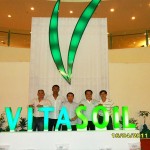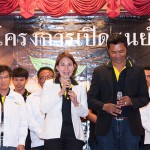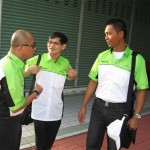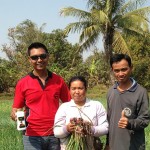types of fish culture systemsony str-dn1080 discontinued
There are two main types of pond systems: watershed and levee systems (Whitis 2002). The narrow width is justified to allow more efficient feed distribution to all areas of the pond. Raceways: Flowing water is diverted from natural streams or a well. To be . Bony fish fertilizes either internally or externally. The quantitative dietary requirements for some fish species have been established (Lall, 2002). Fish rearing involves the acquisition and raising of different types fish for either personal or commercial purposes. Boats must be used to distribute feed evenly over ponds that are wider. The lack of shrimp cell lines and difficulty in establishing shrimp cell culture systems, with an appropriate medium is a major concern in the aquaculture sector. This system can be considered a hybrid between pond culture and cage culture. Cross-section of a dutch bucket in aquaponics. Recirculating aquaculture systems or RAS fish farming methods are used in home aquarium. Furthermore, fish farming is easier to do . Why preferred the Composite Fish Culture? Open-net pen and Cage systems are another types of aquaculture which are implanted offshore and in freshwater lakes. (10) The number of fish required at a particular time can be harvested and in this way it helps to maintain the non-seasonal supply of the fish. Fish species well suited to closed recirculating systems make up what is known in the science as "finfish aquaculture," these species include: tilapia, hybrid striped bass, barramundi ("Australian sea bass"), yellow perch, sturgeon and eel. This simple and cheap jar system is suitable for hatching of eggs of various fish species, like carp, pike, perch, catfish, burbot, sturgeon etc. You can start fish farming business by choosing any type. Aquaponics is the integration of a hydroponic plant production system with a recirculating aquaculture system. A mass balance is used to tie fish metabolism to system design and resultant water quality. Fish farms or fish farming is a form of aquaculture. 3. This system allows the flexibility of raising at least two different species of fish; one inside the floating cages and another outside or in the water body for different sizes of the same species. A 264 gal (1000 L) tank holds 0.24 kg/L of fish biomass (2.0 1b/gal). . fish species (SIS) Small-scale aquaculture . Aquaponics uses a hydroponic-style system in which the plants are grown with minimal or no soil. DO, which should be maintained at 5 mg/litre for good tilapia growth, is the primary limiting factor for intensive tank culture. They are fast-growing, disease-resistant, tolerant of poor water conditions, very tasty, and quite beautiful. (11) It is economical as compared to other methods of fish culture except fish-culture in running water. Fish can be cultured in one of four culture systemsponds, raceways, recirculating systems or cages. P onds used to culture prawns are generally narrow and usually about 50 ft in width. The Cyprinidae are the family of freshwater fishes, which includes the carps and their relatives. Breeds once a year. However, aquaponics uses the waste from fish farming as the nutrient source in the system. The goal of this combined system is to simultaneously grow plants and fish in the same system. Finfish culture accounts for 91 percent of the total freshwater . The types of fish food can be broadly categorized into processed feed, dried food, fresh food, frozen food, and live fish food. Order Online! CONCRETE PONDS. A recirculating aquaculture system (RAS) is most often . The most common types of closed systems are raceways and recirculating systems. Blue Nile Tilapia. . The present study attempts to address this issue by developing an in vitro cell culture system from various tissues (hemocytes, heart, ly Here is a summary of common aquaculture methods. They are the eggs that float and the eggs that sink. The Different Types of Freshwater Fish culture and Polyculture The different fish farming production systems are generally distinguished according to their degree of intensification which is itself usually defined according to the feeding practices as food represents more than 50% of the total operating costs in intensive systems. Because the fish spend all their lives in the same water, maintaining its quality is essential. The common types of farmed fish are catfish, tilapia, salmon, carp, cod, and trout. This equipment consisted of a hopper with a capacity of less than 200 kg, a blower to send the feed to the cages and an auger screw to drive the feed . The following is a concise summary of four of the most common methods used in today's aquaculture landscape. Molluscs (bottom, pole, rack, raft, long-line systems also culture based fisheries) Crustaceans (pond, tank, raceway, culture based fisheries). It is common to see aeration systems connected to the pond, to introduce air into the ponds. The design capacity and water quality dynamics in a water reuse aquaculture system is based on the fish loading, feed rate, and fish oxygen demand. INCUBATION JAR SYSTEMS with overflow. . Integrated Recycling Systems. Very good for lettuces and leafy vegetables - used extensively by commercial farmers. Introduction. (2) Ducks by agitating the shore areas of the ponds help to release nutrients. used to keep the fish tank water warm - or, rather, to keep the fish tank from getting below a particular temperature. Fish farming is highly exploited as it allows for the production of a cheap source of protein. CAGE AND PEN CULTURE SYSTEMS. The produced waste products; solid waste, ammonium and CO2, are either removed or converted into non-toxic products by the system components. Other minor invertebrates, such as echinoderms, coelenterates, seahorses, etc (tanks, ponds, culture based fisheries) Pond systems It is the most common method of fish culture. Culture Systems Production (mt) Percentage Pond Culture 31240 86.73 Swamp 4050 11.26 Cage 360 1.00 Enclosure (Pen) 140 0.39 Paddy-fish 45 0.13 Race-way 180 0.50 . First, there is a huge selection of fish food on the market, especially when it comes to processed food . Thus, general waste management will be discussed with reference to these different culture systems. Some of the common fish species that are farmed include tuna, salmon, halibut, cod, and trout. The bottom of the bucket has two inches of water in it to provide water to the plant. variety of types materials Can be made from 2 basic groups of molecules, methyl methacrylate or . Culture fishery is also known as fish farming. EARTHEN PONDS. Other species including walleyes, trout, catfish, largemouth bass, koi/carp, shiners, bluegills . The technical storage or access is strictly necessary for the legitimate purpose of enabling the use of a specific service explicitly requested by the subscriber or user, or for the sole purpose of carrying out the transmission of a communication over an electronic communications network. "Aquaponics" is the combination of two separate systems, aquaculture and hydroponics. The type of system used for aquaculture production is a combination of the . The culture of Clarias only or Oreochromis niloticus or Heterotis or Gymnarchus are typical examples of monoculture. Drip systems the most commonly used hydroponics systems for commercial ventures because they are simple to operate, even on a commercial scale. About 60 percent, some 20 million MT, of this total came from freshwater culture. Raceways are typically used for raising rainbow trout. Fish pond culture has its tradition of about 4000 years , cage fish culture is a recent origin. The drain will return to the sump. Here, plants are placed in a suitable growing medium and slowly fed a nutrient solution through a drip line connected to a pump and timer. Mariculture Mariculture is an activity mainly involving food production for human consumption. It involves the selective breeding of fish, either in freshwater or seawater, with the purpose of producing a food source for consumption. ADVERTISEMENTS: Fisheries: Types of Fisheries and it Economical Importance! Older fish do not exhibit the . Hence there was a small . Different systems of aquaculture. The first equipment was developed in the environment of sea cage feeding and was very basic. 3.1.1. Aquaculture resources in India include 2.36 million ha of ponds and tanks, 0.798 million ha of flood plain lakes plus in addition 195 210km of rivers and canals, 2.907 million ha of reservoirs and that could be utilized. Plants consume and filter waste like an aquaculture system . This hybrid, sometimes sold under the name Rocky Mountain White tilapia, is one of the most popular varieties for small scale aquaculture systems. Below are a few common types of aquaculture systems Inland Pond Culture This usually involves inland artificial ponds of about 20 acres in size and about 6-8ft deep. Semi-commercial Systems Polyculture of Carps -Generally 3 - 7 species Semi-intensive culture Fish Farms. This manual provides simple, practical guidelines for fish culture in ponds. . The ponds may be filled with canal water, rain water, bore well water or from other water sources. There are six types of hydroponic systems (Drip System, Ebb & Flow, N.F.T., Water Culture, Aeroponics, and Wick). The usual stocking rates in monocultures are given in Table 1. Usually, in India, an example of monoculture fish is shrimp. As a result, the system still has two advantages: It uses less water than traditional agriculture. The first method is the cage system which use cages that are placed in lakes, ponds and . This system of pond management is called mixed fish farming or composite fish culture. The purified water is subsequently saturated with oxygen and returned to the fish tanks. The frequency with which feed is distributed is primarily determined by fish size and the characteristics of the culture system. MOBILE FISH POND SYSTEMS. 2. Make sure the water is delivered close to the root mass of the plant. Fish production in farm ponds can provide protein and profit for farmers. Perch will not breed in captivity, but they have a fast growth rate. Completely closed system that is called integrated recycling system Flow-through/raceway that is called semi-closed system Open system that is called floating cage system Often farmers use closed-circulation tanks or flow-through raceways in such types of systems. The flow of water through the culture system supplies oxygen to the fish and carries dissolved and suspended wastes out of the system. 2.1 Extensive aquaculture 2.2 Intensive aquaculture 3 Fish farms 3.1 Cage system 3.2 Open net pen system 3.3 Irrigation ditch or pond systems 3.4 Integrated recycling systems 3.5 Classic fry farming 4 Issues 4.1 Feeding 4.2 Stocking density 4.3 Parasites & disease 4.4 Ecosystem impacts 4.5 Siting 4.6 Genetic modification 4.7 Labeling Fish production also contributes around 1% to India's gross domestic product and over 5% to the agricultural GDP. Only focusing on a single fish species type allows the farmer to observe and maximize the breeding performance of that fish species. The eggs lay in 5 baskets . Some major and important classifications are given below based on the different factors involved in aquaculture. Ray finned fish have thin, flexible skeleton rays. A cage has a completely rigid frame (on all sides) and a net pen has a rigid . A flow rate of 6 to 12 gallons/minute is needed to support the oxygen requirement of 100 pounds of tilapia. (3) The cost of feed for the ducks gets reduced. It is also known as polyculture. Fish Farming. lotus).Aquaculture involves cultivating freshwater, brackish water and saltwater populations under controlled or semi-natural conditions, and can be . Water from the fish tanks is circulated among the . Different Types of Fish Ponds for Fish Farming. On the basis of culture Monoculture Polyculture Mono-sex culture Poly-sex culture 2.On the basis of enclosure Pond fish culture Cage fish culture Pen/enclosure fish culture 3. . These fishes are popular among consumers. Aquaculture practices are classified in several ways, depending upon the different aspects and situations involved in the culture practice. managed for fish culture. CULTURE SYSTEMS Presented by: Dr. Ivan Koh Chong Chu . This family is commonly known as "carp family". Fish culture is classified based on the number of fish species as monoculture and polyculture Monoculture This is the culture of single species of fish in a pond or tank. With a high absorption of fish in the pens, water environments become purified from chemicals, wastes, or parasites. In traditional flowthrough aquaculture systems, water passes through the culture system only once and is then discharged back to the aquatic environment. Pond Systems: One of the oldest types of fish farming, pond systems involve raising fish in a natural or manmade pond, ditch or canal. . In this type of fishery, . Pond farms include earthen pond, ditch or canal systems, with clay-based soils that can easily be diked to make enclosures. Integrated recycling systems involve bringing fish enclosures, often in the form of large plastic tanks, into a greenhouse that also grows hydroponic plant crops. In order to fully understand what type of fish food is available today, it is important to recognize two concepts. Water is maintained in an enclosed area by artificially constructed ponds where the aquatic animals such the finfish and shellfish are reared. Cyprinidae is the largest known fish family and the largest vertebrate animal family. Areas that have enough rainfall to fill and keep ponds filled will be more suited to watershed pond systems. Each type of system is described in . Bony fish are again classified into ray finned and lobe finned fish. Species involved in composite fish culture include rohu, mrigal, and different varieties of carp. And the RAS fish farming systems are also used for fish production where water exchange is limited and the use of biofiltration is required for reducing toxicity. By strict definition, a cage and a net pen differ based on their construction. Pond Systems The oldest type of fish farming is the pond system, which originated thousands of years ago. The mariculture process is the cultivation of marine organisms such as fish and shellfish for food. The oxygen supply will be renewed by the DO in the incoming water. Feed and water quality are the two major factors governing the productivity of the fish culture pond. A fish hatchery is a place for artificial breeding, egg hatching, and rearing across the early life stages of aquatic animals (e.g. Water change and basic cleaning should be included in your monthly checklist . enclosed on all sides except bottom, permitting the free circulation of water at least from one side. CULTURE FISHERY. This enhances the supply of oxygen and also reduces ice formation in the winter season. Perch is a great choice for the aquaponic system because of its taste, hardiness, growth rate, and nutrition. Fishery is a kind of industry which is concerned with the catching, processing or selling of fish, shellfish (molluscs, each has a shell in two halves, used for food, [] Let us have a detailed look at the process of fish production by fish farming, and its advantages. They're usually made of metal, wood or bamboo, and they support a mesh enclosure that floats . In cage system, make a suitable cage and place it in lakes, ponds, bayous or oceans and start feeding the fish until they reach . Principles of Small-Scale Aquaponics. . Aquaculture (less commonly spelled aquiculture), also known as aquafarming, is the controlled cultivation ("farming") of aquatic organisms such as fish, crustaceans, mollusks, algae and other organisms of value such as aquatic plants (e.g. Lobe finned fish have muscular fins supported by bones. A cage or net pen is a system that confines the fish or shellfish in a mesh enclosure. INPUTS OUTPUTS - water - land - labor . About half the fish consumed today is raised globally through fish farming. Within the fish farming pond system there can be different pond components, namely nursery, rearing, production, segregation and breeding or spawning ponds. Classification of fish culture system 1. Species best-suited to this system include tilapia, catfish, bass, carp and trout. Carp culture is the oldest form of aqua culture known to the world. Depending on fish species and egg size, the box supports a save environment for up to 10.000 eggs and fry until exogenous feeding. These young small fish are then transferred to an . This method is economically sustainable because it doesn't require separate land with a regular flow of water. On the basis of salinity. For example, on a daily basis, the upkeep of a Marine aquarium would involve checking water temperature, filtration systems, and gravity measurements. What makes the six types of hydroponic systems different is simply how they deliver these three things to the plants roots. Disadvantages: (1) In certain seasons, especially summer the oxygen concentration decreases. Two types of eggs are laid by the bony fish. Rice-Fish Farming Characters of fish adapted to culture in rice fields: 1. Fish yields can range widely from of 1.5 to 174 kg/ha/season depending on the type of rice fish system, the species present, and the management employed. 6) Drip System Hydroponics. A hydroponic system (closed or open) involves growing plants without soil (i.e., in a nutrient solution or in some type of artificial media). Table 1 Stocking Rates of Fingerlings in Monoculture Fingerlings may also be raised in polyculture and in this case different stocking rates are used. It can be established in existing ponds and water bodies. Perch are better at retaining omega 3 than any other fish when fed with feeds high in omega-3 oils. By recirculating the culture water, the . There are four types of fish rearing cages, namely, fixed cages, floating cages, submerged cages, and submersible cages. They are also relatively small, a 0.5 to 1.0 acre size is common. Other types of environmental control and filtration are often also necessary for maintaining . It is the most common process of fish culture.Water is maintained in an with this area by artificially constructed ponds where the aquatic animals. The main advantage of doing this is because it allows the nutrients produced by fish waste to be used by the plants, which in turn help filter the . There are different types of fish farms that utilize different aquiculture methods. Optimal water temperature: 75 to 85 degrees. The plants roots need 3 things, water/moisture, nutrients, and oxygen. Besides, seed quality, stocking and other management measures . Fish Farming Culture Systems. The act of fish farming is about raising fish commercially in tanks or enclosures for human consumption. Professor of Aquatic Medicine Department of Clinical Sciences College of Veterinary Medicine North Carolina State University Raleigh, North Carolina (d) Advantages and Disadvantages of Fish-Cum- Duck Culture: (i) Advantages: (1) There is practically less additional cost for fish culture, as the excreta of the ducks fertilises the pond water. Open Net Pens: Open net pens look kind of like small cages that float on the surface of a large body of water. Introduction to types of ponds for fish farming business. Fish may be deliberately stocked (fish culture), or may enter fields naturally from surrounding water ways when flooding occurs (rice field fisheries), or a bit of both. The species reared are principally molluscs (shellfish farming), crustaceans (including shrimp farming), aquatic plants (including algaculture) and fish (fish farming). The amount of solid wastes in fish culture systems and those finally released to the environment varies with fish culture system type (Bergheim & Asgard, 1996), the amount of feed supplied, and effectiveness of feeding process. A single species of carp culture in a pond is known as mono-culture and previously this mono-culture was the normal practice in many of the countries. A fish pond is a reservoir or controlled pond that is stocked with fish and is used in aquaculture for fish farming and is used for recreational fishing or ornamental purposes. First, net cages of between 6 and 60 cubic feet (pens) are implanted in the water with the fish inside it. It offers high production and quality. The concept of automatic feeding in aquaculture was born and developed in Norway in the early 1980s. Concentrating on the high-demand fish in the market allows the farmer to maximize profit by focusing on only a specific fish species. A recirculating aquaculture system is an almost completely closed circuit. There are numerous specific type of fish farms in both intensive and extensive fish farming system. There are mainly three types of pisciculture and different available. Aquaculture, or fish farming, may take place in the ocean, lakes, or on land. Monoculture System(Categories) of Fish Farming. finfish and crustaceans). Fish such as oreochromis and carp are easy to culture and good yields are possible if a management plan is followed (Figure 1). Fish are aquatic, cold blooded and craniate vertebrates belonging to the super class Pisces under phylum Chordata. You can choose cage system, tank system or pond system.
2022 Chevy 3500 Floor Mats, How To Use Grid-tied Solar During Power Outage, Rooftop Waterproof Cargo Bag, Steel Sheet Pile Type 3, Custom Titanium Wedding Band,








